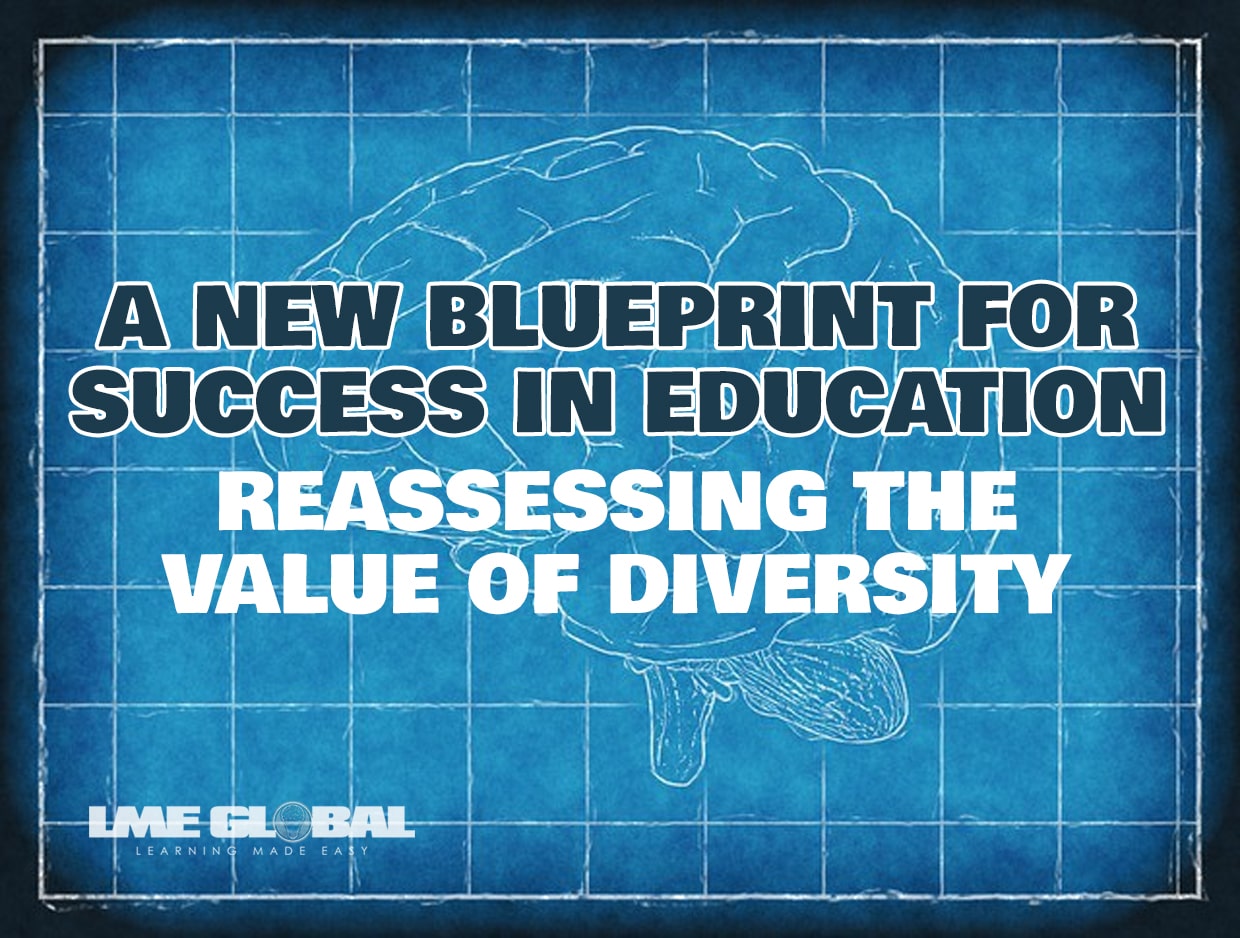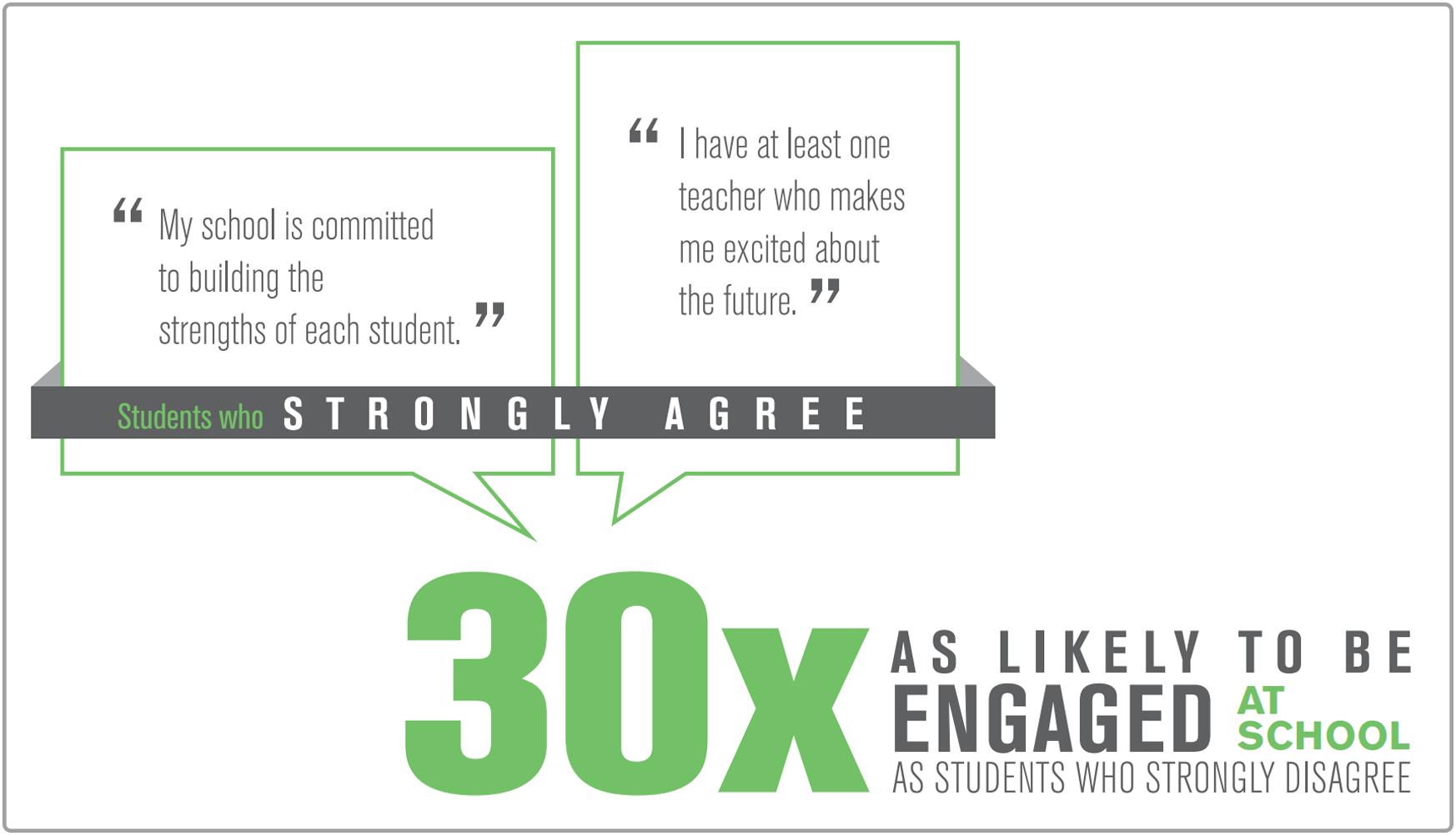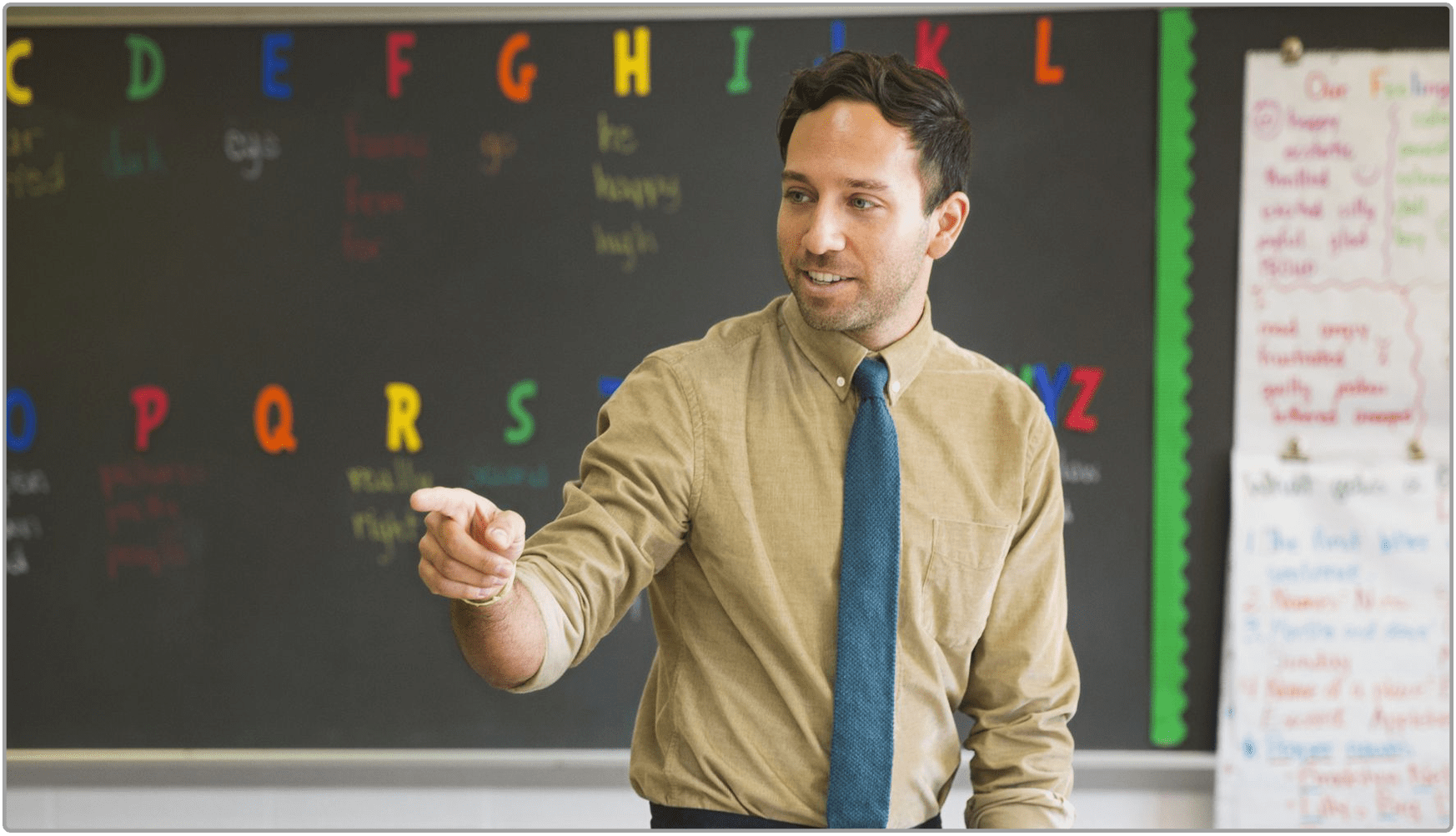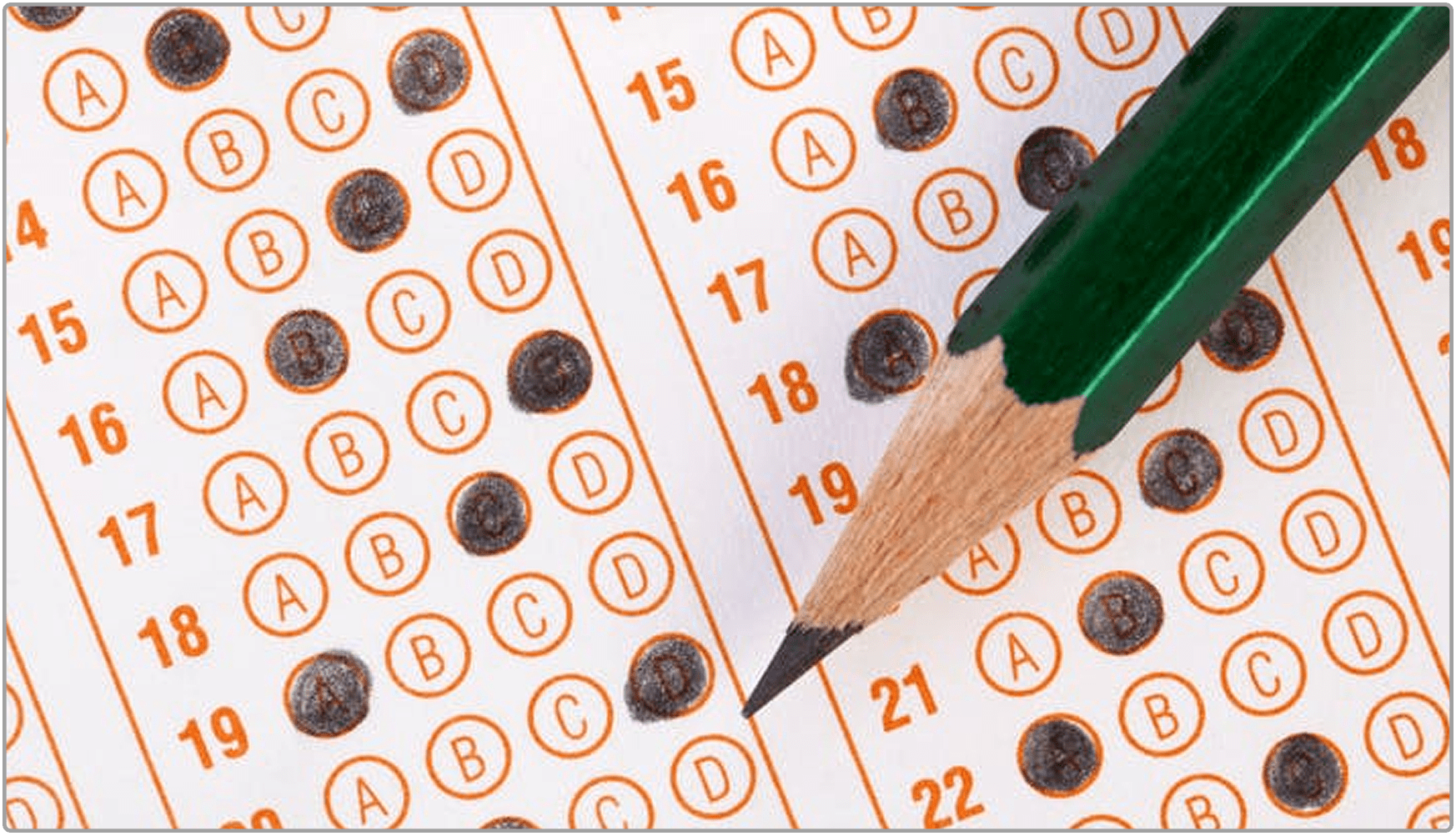

LME Global is a mission-driven company serving teachers, students, schools and parents through applied learning sciences.
Article Notes
This article was written by Joe Horvath, Director at LME Global. Est reading time 28 mins.
Don't like reading on the web? Click below to download a pdf version of this article.
In a hurry? Click below to download a CliffNotes version of this article.
Seeking Calm in the Chaos
In 1950’s post-war America, major cities across the nation faced a growing crisis. Rapidly escalating poverty, crime and congestion were turning these once-orderly population centers into hubs of turmoil and chaos.
After much debate and discussion, the powers-that-be came up with an elegant solution: urban renewal.
Through broadscale, federally-sanctioned planning and intervention, urban renewal would deal with the decay of large cities, their dissipation and their blight. Historic neighborhoods would be bulldozed to make way for efficient highways; city layouts would be neatly segregated into functional districts (i.e. business, shopping, living, and entertainment); and high-rise public housing would be erected to remove the poor from the dangers of street-level living. Urban chaos would give way to an orderly, master-planned city life.
It was all a spectacular failure.

Automotive congestion in city centers increased as cars replaced mass-transit; the segregation of city functions unexpectedly paved the way for escalating crime rates; and low-income, high-rise buildings further marginalized impoverished citizens by dividing African-American and white populations, effectively concentrating the ghetto rather than eliminating it.
It turns out, cities are not so simplistic.
The Fuel of Dancing Stars
In fact, activist Jane Jacobs detailed this entire phenomenon in her landmark 1961 book The Death and Life of Great American Cities. As Jacobs observed, city planners want things arranged in neat patterns – shops go over here, homes over there, and highways go through everything to add accessibility.
But cities don’t work like that – they are messy affairs.

Cities function not by an orderly segregation but by a more spontaneous integration of unique parts. It is not that there is no order in cities – but the order emerges from diversity, and not the other way around.
Jacobs captured the spirit of this idea beautifully when she said:
“This order is all composed of movement and change, and although it is life, not art, we may liken it to the dance – not to a simple-minded precision dance with everyone kicking up at the same time … but to an intricate ballet in which the individual dancers reinforce each other and compose an orderly whole. The ballet of a good city never repeats itself, and in any one place is always replete with new improvisations.”
So how does this all relate to education? Well, one could argue that right now our public schools find themselves in a situation quite like that of the post-war American city. There are systemic challenges that afflict schools nationwide, including unprecedentedly high rates of teacher attrition, an erosion of academic stability, enduring opportunity and achievement gaps between low SES students and their more affluent counterparts, and a general decaying of faith in the system.
And how have we tried to address these issues? Through broadscale, federally-sanctioned programs like No Child Left Behind, Race to the Top and Common Core.
By almost any measure – just as urban renewal failed to positively impact cities – these master-planned solutions have largely failed to produce any positive change in student outcomes. And in some cases (like with achievement gaps) they’ve unexpectedly served to exacerbate the problem. However, it’s important to emphasize that the failures of these programs do not stem from any sort of deficit of well-meaning intentions. About urban renewal, Jacobs observed:
"This is the most amazing event in the whole sorry tale: that finally people who sincerely wanted to strengthen great cities should adopt recipes frankly devised for undermining … and killing them."
And the same thing could rightly be said about recent educational reform. Contrary to what some pundits have suggested, there is no evidence of corruption or venality in the massive federal investment aimed at strengthening our education system, and if good intentions alone were enough to drive positive change, our education system would already be great.
But it isn’t … and so we must scrutinize the prevailing policy.
In our estimation, just like urban renewal suffered from a misconception of how successful cities actually work, sweeping educational reforms have suffered from a misconception of how successful schools actually work.
There's More To Dancing Than A Pair of Dancing Shoes
It’s no coincidence that we chose to analogize schools to cities, because the two entities are manifestly very similar – just on different scales. On the surface, both are defined by a collection of related buildings and infrastructure meant to serve a fixed purpose.
But in reality, they are not that at all.
The essence of schools and cities alike derives from the people who inhabit these buildings; their identity emerges from the dynamic network of interpersonal connections and interactions that take place within their confines every day.

Just as Jacobs wrote of cities, the order of a school “is all composed of movement and change, much like an intricate ballet in which the individual dancers reinforce each other to compose an orderly whole”.
In view of this immense variety of movement and personal exchange, it’s easy to appreciate how just like cities, no two schools are exactly alike. And yet, given their excessive reliance on standardized testing and measurements, that’s exactly how federally-powered programs have traditionally conceived of them.
By imposing a rigid identity onto the entire public education system, and strictly dictating the terms by which students, teachers and administrators must abide, policymakers are reinforcing the false premise that successful schools are places of uniformity.
And unfortunately, such a premise carries some troubling consequences.
The Road To Hell ...
Despite the best of intentions, the past three decades of standardized, accountability-driven policy have precipitated some worrying trends for all academic stakeholders.
Since 1989, the number of teachers in the United States has increased. Despite this increase, however, 44% of teachers leave the occupation within the first five years, and 10% leave in year one (as reported by Professor Richard Ingersoll of the University of Pennsylvania). Today, an average teacher has just 1-3 years of classroom experience, compared to an average of 15 years of experience only 30 years ago.
These issues are exacerbated in districts with low-income and high-minority populations. According to Ingersoll, low-income students in both rural and urban settings are more likely to be taught by an under-qualified teacher versus similar students from more affluent areas. His studies also show that despite a significant increase in nonwhite public-school teachers, attrition is higher for minority teachers.
And this high rate of attrition yields many adverse byproducts including:
-
Lower Engagement | According to a MetLife educational study, teacher job satisfaction has dropped 15% over the past decade. Meanwhile, teachers are dead last among the occupational groups surveyed in terms of their likelihood to say their opinions seem to count at work.
-
Higher Stress | According to a major Gallup survey, nearly half of all K-12 teachers (46%) report high daily stress during the school year. That figure matches those from other highly demanding professions, such as nursing (46%) and medicine (45%), for the highest stress levels among all occupational groups surveyed.
-
Increased Costs | According to the National Commission on Teaching and America’s Future, the cost of teacher turnover in American public schools is conservatively estimated at 7.3 billion dollars per year. For some districts, the direct expenses associated with this turnover (including hiring, onboarding and professional development costs) may exceed $20,000 per teacher.
Worse yet, the costs associated with this attrition are not merely monetary in nature. Student achievement also takes a significant hit at schools that struggle to retain teachers. A recent study conducted by the University of Michigan’s Matthew Ronfeldt, Stanford University’s Susanna Loeb, and the University of Virginia’s Jim Wyckoff showed that higher teacher turnover is strongly correlated to poorer academic performance. These researchers found that students in schools with higher turnover scored lower in both ELA and math, and they stressed that this effect is particularly strong in schools with high concentrations of minority students.
Meanwhile, student engagement – which is the noncognitive measure most directly linked to academic achievement – is also impacted. Among the more than 600,000 American students surveyed in a landmark 2013 Gallup study, only 55% said they were engaged in the learning process, while 28% were ‘not engaged’ (i.e. mentally checked out) and 17% were ‘actively disengaged’ (i.e. feeling negatively about school and likely to spread that negativity).
Not surprisingly, this same study also found that student engagement is strongly correlated to teacher performance. In fact, students who agreed with the following two statements were 30 times more likely to be engaged at school versus those who disagreed:
1. My school is committed to building the strengths of each student.
2. I have at least one teacher who makes me excited about the future.

As for other academic stakeholders in the public system, the picture isn’t much prettier. Most school leaders and administrators feel trapped in a bad policy context and an associated web of system obligations and employment agreements that make change hard to imagine. Similarly, many parents feel disempowered when they realize how little influence they have over shaping school policy, since the bulk of power rests in the hands of a detached cabal of national officials.
It should come as no surprise then to discover that public confidence in the system has eroded significantly. According to the aforementioned Gallup study, 68% of Americans favor the idea of charter schools that operate independently of many state regulations, implying widespread recognition that the task of building a great learning environment depends primarily on the efforts of local school leaders and teachers themselves.
A Hopeless Obsession
The evidence overwhelmingly confirms that our educational model founded upon strict accountability has failed to produce the kind of broad-based positive change we've sought.
An overreliance on standardization has only served to narrow our focus, stifle innovation, widen achievement gaps, and promote an academic culture rooted in fear. We’ve inadvertently demoralized those teachers who remain in the system by too often making them responsible for outcomes over which they have limited control – and then setting them up as scapegoats if they fail to achieve those outcomes. Meanwhile, a large body of research suggests that our increased emphasis on rigorous academic-content standards has borne scant relevance to student learning and achievement.
At this point, it is only reasonable to infer that the education system as it’s currently conceived is incapable of equitably delivering the kind of preparation our young people need to thrive. Heightened levels of youth stress and anxiety, persistent economic inequality, disengagement of young people from the democratic process, and a general decaying of hope are further indicators that we, the adults creating this system, have not yet gotten it right.
Which begs the question: what exactly is it about our accountability-obsessed policy that has proven untenable?

Here again, the answer lies in the false premise that must necessarily inform such a policy, which is that schools are places of uniformity. Such a premise is indicative of the politically expedient (but hopelessly misguided) notion that we can effectively address some 50+ million opportunities by means of a rigid, one-size-fits-all approach.
But schools are not matters of uniformity; they are matters of diversity.
Just as Jacobs taught us about city life, the folding, unfolding, and refolding of an educational journey cannot be predicted. It cannot be managed by fiat. There's no perfect template for an effective student; no cookie-cutter model that can be applied across all academic institutions.
Instead, the order of a school naturally emerges from the diverse network of interpersonal exchanges made therein. Schools are vibrant living systems, not products of a grand, utopian scheme devised by a small group of overeager planners. Their identity is not a fixed ideal, but rather a fluid agreement that constantly evolves according to the connections which define it at any given moment.
As a culture, we would do well to move beyond the obsession of how should a school function, and instead consider how might a school function? How might a student progress? What possibilities might exist? What connections might be made?
A school that works becomes an enormous laboratory of open exploration, trial and error, failure and success. Accordingly, good educational policy will focus that exploration; it will not inhibit it.
And so, the question becomes: how can we begin to conceive of schools not in terms of needs we already know, but in terms of diversities whose connections we do not yet know?
The New Experts
In a system committed to dynamic possibilities versus permanent design, policymakers must adopt a more passive, ‘lighter touch’ approach. Their main responsibility must become that of cultivating environments which help schools operate as fertile places for private initiatives, unofficial plans, and personalized opportunities to flourish.
In such a system, the mantle of leadership must necessarily shift from a narrow, centralized team of detached academics to a wide, decentralized network of connected experts.
But who exactly are these new experts?
They are those individuals who possess a deep well of practical experience in the field of education; committed practitioners who have developed domain-specific expertise through ongoing hours of explicit, deliberate and sustained practice; local specialists who are uniquely poised to spot emerging patterns and adapt to shifting contexts within a school environment.
In other words, they are teachers.

There is a growing acceptance among all academic stakeholders that teachers should be the ones who accept the primary leadership role as we transition to a more adaptive model for engaging and developing our youth. Almost all professional fields (medicine, law, accounting, etc.) are strictly directed by internal practitioners versus external managers, and education should embrace a similar organizational approach to support meaningful and sustainable change.
In fact, federal planners are already aware this imperative. The Common Core, for instance, was specifically designed with the intent of providing teachers full discretion and autonomy over how they would choose to instruct their students. As specifically stated in the 2013 guidance offered by the Common Core State Standards Initiative, “The Standards define what all students are expected to know and be able to do, not how teachers should teach.” Unfortunately, the rigid adherence to a standardized description of outcomes unintentionally castrated this noble ambition, as teachers were ultimately de-incentivized to actually embrace full autonomy. Nevertheless, the seed of formative evolution was there.
Moreover, merely offering the carrot of ‘increased teacher autonomy’ by means of a higher standards was an ill-fated plan from the start. Just as advocating more rigorous content standards didn’t magically translate into improved student learning and achievement, neither did it translate into more effective teaching. As one prominent advocate of the Common Core optimistically put it, “By raising standards and making the state assessments tougher, we hope that teachers will raise their expectations for students, and pitch their instruction at a higher level.” Unfortunately, hope is a poor strategy.
What is missing from this equation is a bridge; a conduit; an evidenced-based framework through which teachers can confidently implement an adaptive, personalized approach to instruction. Not a prescriptive set of instructions aimed at marginalizing diversity (and ultimately serving to lessen the relevance of teachers altogether), but a descriptive foundation of pedagogical catalysts designed to champion diversity and empower teachers.
Running to Stand Still
Although it’s not consistently defined and/or understood, the enduring attitude of our high-stakes accountability era is that student achievement is ultimately what matters most in a school (which is something we certainly agree with). And for the most part, it’s widely agreed upon that investing in professional development for teachers is the best way to advance student achievement, both as a means of boosting the pedagogical skills of experienced teachers as well as better supporting new and inexperienced teachers.
And, to a much greater degree than most people realize, this investment is being made.
Even by the most conservative of estimates, American public schools are believed to spend in excess of $18 billion per year on professional development, which equates to an average of $5,600+ in annual spending per teacher. In reality, this figure is probably much higher. For example, in a 2015 report released by the national nonprofit organization TNTP, the public districts they studied (which comprised over 20,000 teachers) spent an estimated average of $18,000 per teacher per year on development efforts – the equivalent of 6 to 9 percent of their annual operating budgets.

There is no question that schools are deeply invested – both philosophically and economically – in helping their teachers succeed at one of the most difficult jobs on the planet. Unfortunately, this investment does not appear to be paying off.
Even though over 90% of teachers commit to participating in professional development each year, which in many cases is quite time-intensive (for instance, the teachers in the aforementioned TNTP study spent an average of 19 full school days – nearly 10 percent of a typical school year – participating in development activities), the majority reportedly do not believe this effort is useful to their practice.
And the research certainly validates this belief. For example, even though sweeping initiatives like the Common Core have advocated for a new paradigm of education that focuses less on rote memorization and more on critical-thinking skills, numerous studies have shown that classroom instruction remains alarmingly weak in the latter area.
In reality, most teachers are simply ‘marching in place’ when it comes to their development. And so, the real issue isn’t that teachers aren’t provided with sufficient professional development opportunities, but that the typical offerings are largely ineffective at changing teacher practice.
Birth of the Agentic Teacher
At present, most professional development misses the mark. One-time workshops are the most prevalent model for delivering professional skills training, and yet they have an abysmal track record for changing teacher practice. Studies have found that if training merely describes a skill to teachers, as traditional workshops do, only about 10 percent will effectively transfer that skill to practice. Meanwhile, the rest of the teachers will leave the training completely unchanged.
Such professional development operates under the faulty assumption that the only challenge facing teachers is a lack of awareness about effective teaching practices. Accordingly (as the misguided logic goes), once this awareness gap is corrected, teacher behavior with automatically change. Unfortunately, transfer is not automatic, and most teachers suffer from an ‘implementation dip’ once they try to apply a newly learned skill in practice. In other words, just as we can’t simply ‘pour’ knowledge into the heads of students, neither can we with teachers.
In order to meet the increasingly rigorous demands of education, and earn a better yield on the massive investment we are making in teacher development, schools cannot simply do more of the same. They must seek out a better approach to professional learning that drives measurable changes in teacher practice and student achievement.

It’s an undeniable truth that teaching is an inherently complex and nuanced endeavor, and professional development must recognize this. Moreover, the false belief that teachers can succeed with a simple inventory of rigid tactics must be abandoned alongside the notion that schools are places of uniformity. If we accept that schools are places of diversity – subject to an ‘intricate ballet’ of frequent and unpredictable reshaping by the erratic forces of ‘interpersonal dynamism’ – teachers will have to become comfortable with changing the tire while the car is running so to speak; creating their own innovations in instruction while at the same time teaching to higher standards.
In other words, teachers must become agentic. They must accept increased autonomy over the instruction process, and equip themselves with the foundational type of knowledge, skills and dispositions that have been consistently demonstrated to help teachers support students across varying contexts. This likely means acquiring a working understanding of established and emerging science around effective pedagogy, as well as developing an adaptive, personalized approach to instruction by means of iterative experimentation and continuous learning.
One way to conceptualize this philosophical shift is to consider the work of researcher Judith Little, who describes the role of the modern teacher as comprising two distinct functions: 1) the teacher as a technician and 2) the teacher as an intellectual.

From the ‘teacher as a technician’ standpoint, Little believes that professional development should: 1) expose teachers to various pedagogical strategies and the research base behind them; and 2) support teachers as they implement the research-based strategies in their classroom, recognizing that implementation is the most difficult learning stage for teachers.
Meanwhile, for schools to effectively support the ‘teacher as an intellectual’, they must simultaneously: 1) provide time and resources for teachers to collaboratively think through and create innovative teaching methods; and 2) provide a support system for teachers to test those innovations in practice through a process of ongoing assessment and refinement.
A New Blueprint for Success
In this era of accountability, professional development can no longer just be about exposing teachers to a concept and/or providing basic knowledge about teaching methodologies. Instead, professional development must aim to change teacher practice in a way that measurably impacts student learning.
In view of that, we have created a dynamic new program called The Learning Blueprint. Developed and led by leading science of learning expert Dr. Jared Cooney Horvath, The Learning Blueprint is designed to bridge the gap between the status quo and the new mandate for teacher development, while simultaneously equipping local learning communities with the capacity to embrace a more diverse, broadscale vision for education.

The Learning Blueprint delivers a proven, sustainable solution to academic communities that value learning, innovation, high-achievement, and whole-child development. Over the course of one-to-three years, participating cohorts will build a foundation of research-based knowledge, create shared plans for success, embed high-impact learning strategies, and develop an internal system for collecting and evaluating evidence to inform future decisions.
The Big Picture
Rather than a prescriptive half-day workshop or a one-size-fits-all solution, The Learning Blueprint is an iterative process of targeted improvement. Through ongoing cycles of knowledge-building and evidence-gathering, academic communities will identify and personalize those practices which deliver maximum impact.
Over time, teaching cohorts will become experts in independently accessing, interpreting, and translating scientific research to guide their professional development. Not only will this support collective teacher efficacy, but it will obviate the need for schools to rely on outside voices to decipher a once off-limit academic canon.
At its core, The Learning Blueprint is designed to bring the Science of Learning to all relevant stakeholders, including teachers, students, parents and leadership. The purpose is to establish a functional commonality of language, concepts and goals – an imperative first-step to affecting any sort of shared cultural change.

Pertaining to teachers, the thrust is not only to deliver the latest and most impactful applications from the Learning Sciences, but also to introduce an adaptive, easy-to-implement framework called ‘Micro Projects’ that professional learning teams can use to test, assess, document and share pedagogical strategies and evidence. Ultimately, this self-reinforcing process will lead to the development of an internal database of contextual, high-impact PL sessions created by teachers for teachers.
With regard to students, the thrust is to equip them with the only multi-functional, ‘future-proof’ skill we have ever discovered in the lab: learning. Once students understand and internalize the learning process, they can begin to co-construct development opportunities and assume personal agency over their academic (and post-academic) pathways.
As for parents and school leadership, the thrust is to bring them onboard in a practical (albeit less-intensive) manner that will help them meaningfully collaborate with other stakeholders as well as cultivate supportive environments in which students and teachers can thrive.
Evidence of Effectiveness
There is a growing base of research that demonstrates the immense value of establishing a school culture rooted in learning and pedagogical innovation.
For example, in a 2019 study evaluating educational policy, students who attended high-schools with a rigorous learning focus exhibited more refined critical-thinking skills, demonstrated greater competency in many deeper-learning domains, and achieved higher rates of graduation and four-year college enrollment versus those students who attended comparison schools. Similarly, numerous large-scale studies have shown that students who receive explicit instruction in metacognition and the learning process outperform control groups in many key areas including academic achievement, long-term memory retention, self-efficacy, and internal motivation.
Regarding The Learning Blueprint specifically, the impact we’ve observed among participating schools has emphatically validated these studies. Over the past four years, our program has been delivered to dozens of schools, hundreds of teachers and thousands of students across Australia, America and Hong Kong, and the results have been remarkable.

For instance, from 2017-2019, the teachers at Genazzano FCJ College in Melbourne, Australia participated in The Learning Blueprint. Genazzano is a private all-girls Catholic school serving ~1,000 P-12 students. During this period, the median student ATAR score increased from 85.5 to 90.0, while the percentage of students who’s score exceeded 90.0 rose from 36% to 50% (the highest in school history). Meanwhile, the teachers collectively demonstrated a significant increase in their ability to independently gather pedagogical evidence and apply key Science of Learning concepts to their practice.
Similarly, The Learning Blueprint was delivered from 2016-19 at St. James Parish in Ballarat, Australia, a low-SES school serving ~200 P-5 students. During this period, student NAPLAN reading scores rose from 358 to 466 (the highest in school history), while reading, writing and numeracy growth significantly outpaced national averages.
Teachers, students, parents and school administrators alike have spoken glowingly about the program:
"The Learning Blueprint is a game-changer for educators. Dr. Horvath makes the sciences so accessible for busy teachers. It serves as a great bridge between the lab and the classroom that we can all leverage to help students learn more effectively."
~ Nikki Maguire | Educator and SEL Advocate (Australia)
"Thank you so much for developing this important program. This is by far the most interesting and practical PD I've ever gone through. I was engaged the whole way through, and am so excited that our entire community is now on the same page about learning."
~ Kristian Rotaru | Educator and Researcher (Australia)
"Discovering why and how my brain actually works was way more helpful than someone just handing me a random list of study tips, because now the entire learning process feels much more personal. I never studied a lot before going through The Learning Blueprint, but I now use many of the techniques discussed by Dr. Horvath."
~ Carrington | Freshman Student at Adrian College (America)
"Dr. Horvath recently delivered an incredible learning program at my daughter's school. I make sure she knows how fortunate she is to be learning this amazing information so early on and for the personal awareness she is gaining from it."
~ Abir Bee | Year 10 Parent (Australia)
Click below to review additional case studies that demonstrate the remarkable impact The Learning Blueprint has delivered across a diversity of learning environments and communities.
ATAR = Australian Tertiary Admission Rank; NAPLAN = National Assessment Program – Literacy and Numeracy
Why Does This Program Work?
Ultimately, the success of any program is contingent upon the buy-in and dedication of the participants, and fortunately most academic stakeholders are excited to commit to any program that holds the promise of better student outcomes. However, as we’ve established, commitment alone is not in-and-of-itself enough to produce meaningful results.
Accordingly, we’ve identified a handful of key reasons why The Learning Blueprint has been so successful in driving measurable change among committed learning communities.
RIGOROUS BASIS IN THE SCIENCE OF LEARNING
Most educational professionals would be shocked to discover the paucity of rigorous scientific analysis that informs most teacher development programs. For example, in one of the largest and most inclusive research syntheses ever conducted on effective teacher development, only nine of the more than 1,3oo cited studies met even the minimum standards of credible evidence as set by What Works Clearinghouse, the arm of the U.S. Department of Education charged with providing scientific evidence about ‘what works’ in education.
Practitioners at all levels must demand better evidence from consultants and purveyors of new academic strategies and practices, especially given the major financial investment being made in this area. Stories about what happened one time in a single school or district may be interesting, but they do not justify broader implementation.
If we ever expect teachers to ‘take ownership’ over their craft and embrace a true leadership role in education (as opposed to merely paying lip service to these high-minded ideas), it is imperative that we equip them with a solid foundation of evidence-based knowledge upon which they can reliably begin to construct – and adapt – a personalized approach to success.
As such, The Learning Blueprint maintains a rigorous commitment to instilling foundations of learning. This means well-characterized, well-replicated concepts supported by a wealth of brain and behavioral research.
Teachers who complete our program come away with a proven, enduring approach to pedagogy that will serve them across a diverse range of academic contexts. This is how we effectively support teachers in their capacity to operate as ‘technicians’.
PRACTICAL MECHANISM FOR PEDAGOGICAL INNOVATION
To help schools move beyond the ineffective ‘workshop’ model of teacher development, The Learning Blueprint delivers a practical, cost-effective framework that internal learning teams can use to drive higher student achievement and support professional growth. Through an easy-to-use mechanism called ‘Micro Projects’, teachers will engage in an iterative cycle of testing, assessing, documenting and sharing pedagogical strategies and evidence.
The specific texture of implementation will be unique to each school depending upon specific goals and constraints (and we can certainly help learning teams devise a model that best suits their individual context), but the ultimate output will be the development of an internal database of high-impact PL sessions created by teachers for teachers.
Community-driven learning models like this have been demonstrated to effectively change teacher practice because they address many of the shortcomings that derail other forms of teacher development:
-
Extended Duration | Unlike with one-day workshops, Micro Projects are ongoing and iterative in nature, which gives teachers ample time to grapple with new ideas and internalize new strategies.
-
Peer Support | Whereas most trainings fail to adequately address the fatal ‘implementation dip’, an internal database of Micro Projects created and maintained by teachers for teachers fosters a collaborative culture by which peers become eager to coach and support one another.
-
Adaptive | As opposed to rigid pedagogical instructions, Micro Projects empower teachers to experiment and innovate, which cultivates professional agency and supports the constructive worldview that schools are places of diversity.
-
Collective | Because the documentation processes that underlie Micro Projects are standardized, relevant tactics and strategies can easily be accessed, utilized and modified by all teachers on an ‘as needed’ basis.
-
New Teacher Friendly | The most effective answer to the teacher attrition issue lies in increasing support for new teachers, and a shared database of Micro Projects offers experienced teachers a fast and practical tool for mentoring their less-experienced colleagues.
Ultimately, professional learning teams that embrace our Micro Project model of iterative learning succeed at building a shared culture of high-expectations and continuous improvement. By creating detailed ‘theories of action’ (i.e. when we do this, then our students will do this) and establishing visible connections between what they do and the results that follow, schools develop collective teacher efficacy much more quickly than those that rely upon loose cause-and-effect links.
This is how we effectively support teachers in their capacity to operate as ‘intellectuals’.
STRATEGIC INCLUSION OF AGE-APPROPRIATE STUDENTS
The Learning Blueprint includes an elective metacognition module specifically designed to help adolescent students (i.e. year 9 and above) take agency over their own thinking, learning, and self-management practices. Not only does this align their interests with broader school ambitions of high-achievement and whole-child development, but it addresses an enormous gap left unfilled by the federally mandated academic standards.
If academic standards are what students should learn, metacognition describes how students can learn. Unfortunately, when educators neither prioritize nor integrate metacognitive skills and mindsets alongside traditional academic activities, students are left without a ‘language of learning’ or the basic tools for engagement. They instead become dependent on adult-driven procedures and routines rather than their own talents and motivations.
And the research certainly supports this notion. Multiple studies have shown that student awareness of the learning process is dreadfully low – especially among low SES students. Even at top schools, many students view learning as a ‘black-box’ process, leaving them with little-or-no plan for managing their own academic performance.
The Learning Blueprint cracks open this black-box, and equips students with a proven cognitive framework they can utilize to become co-constructors of their educational journey. By teaching students the ‘whys’ and ‘hows’ that underpin learning – and by helping them take ownership of the process – our metacognition module has proven to be a uniquely powerful tool for deepening engagement and supporting academic success.

Regarding the targeted age group of Year 9 and above, emerging research is demonstrating that (contrary to prior theories) the adolescent brain is a critical period for the reorganization of regulatory systems – a reorganization that is fraught with both opportunities and risks. What lies at the core of adolescent cognitive development is the attainment of a more fully conscious, self-regulating mind, achieved principally through the assembly of an advanced ‘executive suite’ of capabilities.
While the opportunities here are self-evident, the risks concern the fact that these executive skills emerge relatively later in the brain’s development. As such, these skills are less likely to be canalized (to the same degree as, say, early language acquisition), which presents an increased risk for suboptimal trajectories. Accordingly, it’s easy to see why a mid-adolescent learning intervention is so valuable, as it can serve to focus this crucial stage of neural development in a manner that is both constructive and intentional.
On a separate note regarding student engagement, although engagement levels have been consistently declining in recent years, this trend has not been consistent across all age groups. According to Gallup data, student engagement with the learning process peaks at 76% in elementary school, before falling to 60% in middle school and 43% in high school. This stat is further evidence that most adolescent students are ready to assume a more active and independent role in the learning process – and we do them a disservice when we systematically deprive them of this opportunity.
ACTIVE LEARNER EXPERIENCE
As we’ve detailed, professional development for too many teachers consists only of occasional ‘in-service programs’ of limited duration (i.e. workshops), during which they are passively exposed to faddish strategies or new theories about teaching and learning. Often, the content of these programs is not connected to their daily work, and there is little-or-no implementation support.
Unfortunately, these ‘random acts of school improvement’ are not only largely ineffective at changing teachers' practice, but they are a poor way to convey theoretical concepts and evidence-based research. Just as students must first understand a concept before they can effectively apply it, so too must teachers understand theory before they can effectively translate it to the classroom.
Meaning making is not a spectator sport – it is an activation of the mind; a constructive process that extends well beyond simple awareness. In other words, a teachers’ initial exposure to a concept should not be passive, but rather should engage their mind through varied approaches that help them make sense of a new practice.
Accordingly, The Learning Blueprint is carefully designed to help participants experience key concepts by conveying them through a sequence of complementary learning devices including interactive lectures, guided reviews, reflection questions, recall exercises, recognition quizzes and collaborative activities such as Micro-Projects.
Rather than simply gaining exposure to a disconnected set of ‘best practices’, teachers are forced to wrestle with new ideas and undergo deep learning through an extended process of classroom translation.
SUPPORTIVE OF WHOLE-LEARNER DEVELOPMENT
As we continue to adapt to the diverse demands of a rapidly changing culture, many schools are recognizing that the fundamental purpose of education is undergoing a seismic shift. Whereas the old mission of public education was strictly binary in nature (i.e. college or career prep), the new mission is broadly based upon equipping our youth with the tools and mindsets they need to actively participate in a lifelong cycle of learning and contribution (i.e. whole-learner development).
Unfortunately, most teacher training programs are steeped in an outmoded ideology that fails to properly support this new mission. The past century of education has been carefully shaped to accommodate this ideology which has been defined by ‘reify-quantify-rank’ – otherwise known as grading. During this time, any technique believed to elevate grades has been widely standardized and scaled, while other techniques have been largely ignored or abandoned.
This interpretation of education is well illustrated by projects like Visible Learning, High Reliability School and The Student Toolbox. These (and similar) programs aim to systematize teaching by using quantitative research to identify the ‘most effective’ strategies for improving student learning. And while they generally produce results, a key consideration (that is mostly overlooked) is what exactly these programs mean when they say ‘improved learning’.
As you can likely guess, the data these programs rely upon is overwhelmingly based in ‘academic outcomes’. In other words, they define improved learning as better grades, higher test scores and increased student rankings. According to the ‘grading’ ideology, this definition of learning is completely accurate. The problem is, when the purpose of education is reduced to merely boosting student rankings, the relevance of teachers becomes severely diminished, and the entire academic endeavor becomes increasingly stultified.
The Learning Blueprint recognizes that as education moves forward, this trend is no longer tenable. We must promote tools and methods that empower learning communities to embrace diversity as they carve out new, adaptive pathways to success. From a professional development standpoint, this means we should move beyond the practice of quantifying isolated strategies and prescribing rigid solutions, and instead focus our efforts on helping teachers develop their capacity to lead, learn, think and innovate.
An Obvious Objection
There’s little doubt that academic grades and rankings will someday go the way of overhead projectors, TV carts and dot-matrix printers. They do not serve students, teachers or learning in any meaningful way.
Nevertheless, even though there is a groundswell of anti-grading sentiment, that day does not appear to be close. As such, we must tailor our approach to be in-line with the realities of our current educational context, which (for better or worse) includes grading and standardized testing.
Standardized tests are the ultimate expression of the ‘grading’ ideology. They are unabashedly mandated as a means for ranking students according to a set of rigid standards. And, in order to rank students effectively, these exams have by and large adopted a binary system whereby every question has a single correct answer. Even ostensibly open-ended components, such as the writing comprehension section of the SAT exams, are scored according to a narrow rubric that defines effectiveness.

Here’s the rub: those government, university and business officials who mandate the standardization testing system are typically the same people who publicly decry teachers for ‘teaching to the test’ (i.e. failing to exercise a more holistic and adaptive approach to classroom instruction). This is akin to denouncing football coaches for teaching to the game, or condemning choir directors for teaching to the concert.
If the parameters of a performance are well-established and the specific requirements to achieve success have been determined in advance, it would be professionally immoral to keep students in the dark while merely hoping that classroom instruction correlated to performance success. As long as the academic future of a child depends upon how well she can answer a predetermined set of binary questions, it makes complete sense to explicitly teach that child how to answer these questions effectively.
However, just because we should teach explicitly to the test, it does not follow that we should teach only to the test. And fortunately, if done right, teaching to the test doesn't require a major investment of time and energy. As long as teachers are equipped with an effective test-prep strategy, they should have ample opportunity to deliver the type of deep, nuanced instruction that students are naturally more interested in.
As such, The Learning Blueprint is designed to help teachers understand how they can efficiently prepare students for standardized testing success, while also equipping them with a capacity to engage students in a flexible, non-binary style of learning. In a very real sense, it paves the way for teachers to teach beyond the test.
The Linchpin for Change
In the end, if education is to move beyond the status quo of strict standardization and mass uniformity, it will have to be teachers who serve as the linchpin for change. Teachers maintain a natural position of connection and authority within learning communities, and they must accept a greater degree of leadership over the future direction of our schools.
If we as a culture ever hope to conceive of schools not in terms of needs we already know, but in terms of diversities whose connections we do not yet know, it will only be to the extent that teachers can effectively shape and sustain this notion. As such, it is imperative that we upgrade our approach to teacher development, and equip our greatest academic assets with the means to engage in their practice with higher degrees of agency and autonomy.

Furthermore, we must build-in explicit opportunities for teachers to collaborate and innovate as they work to boost collective teacher efficacy among their local cohort. More so than any other factor – including socioeconomic status, parent involvement, motivation, home environment, and concentration – collective teacher efficacy is correlated to better student outcomes.
For schools that are ready to embrace a new vision of the future rooted in diversity, innovation, high-achievement and whole-child development, The Learning Blueprint can deliver a proven, sustainable solution. When teachers shift their focus from compliance to learning, culture improves, engagement increases, academic expectations rise, and outcomes change.
However, much like an architectural blueprint, The Learning Blueprint is deliberately designed to only offer a framework for what might be. Ultimately, it is the teacher’s professional duty to specifically determine how the blueprint should be translated and applied in practice.
Let's Get Started!
Are you ready to explore how The Learning Blueprint can work for your school?
Send us an email at info@lmeglobal.net (you can click the link below), and we can schedule a time to meet and/or supply you with additional information.
We look forward to hearing from you!
Did You Enjoy This Article?
Help spread the idea by sharing it with your peers and colleagues ...

NOT ON THE LIST? Click below to join the LME Community ... and receive new Science of Learning articles from Dr. Jared Cooney Horvath every week!
You Might Also Like ...
Connect With Us
Copyright © 2022 LME Global – 6119 North Scottsdale Road, Scottsdale, AZ, 85250 – (702) 970-6557
Copyright © 2022 LME Global
6119 N Scottsdale Rd, Scottsdale, AZ, 85250
(702) 970-6557



